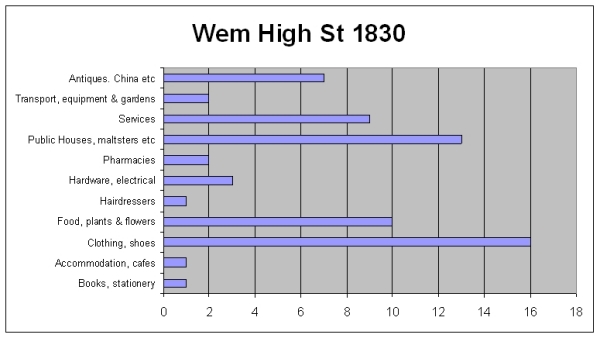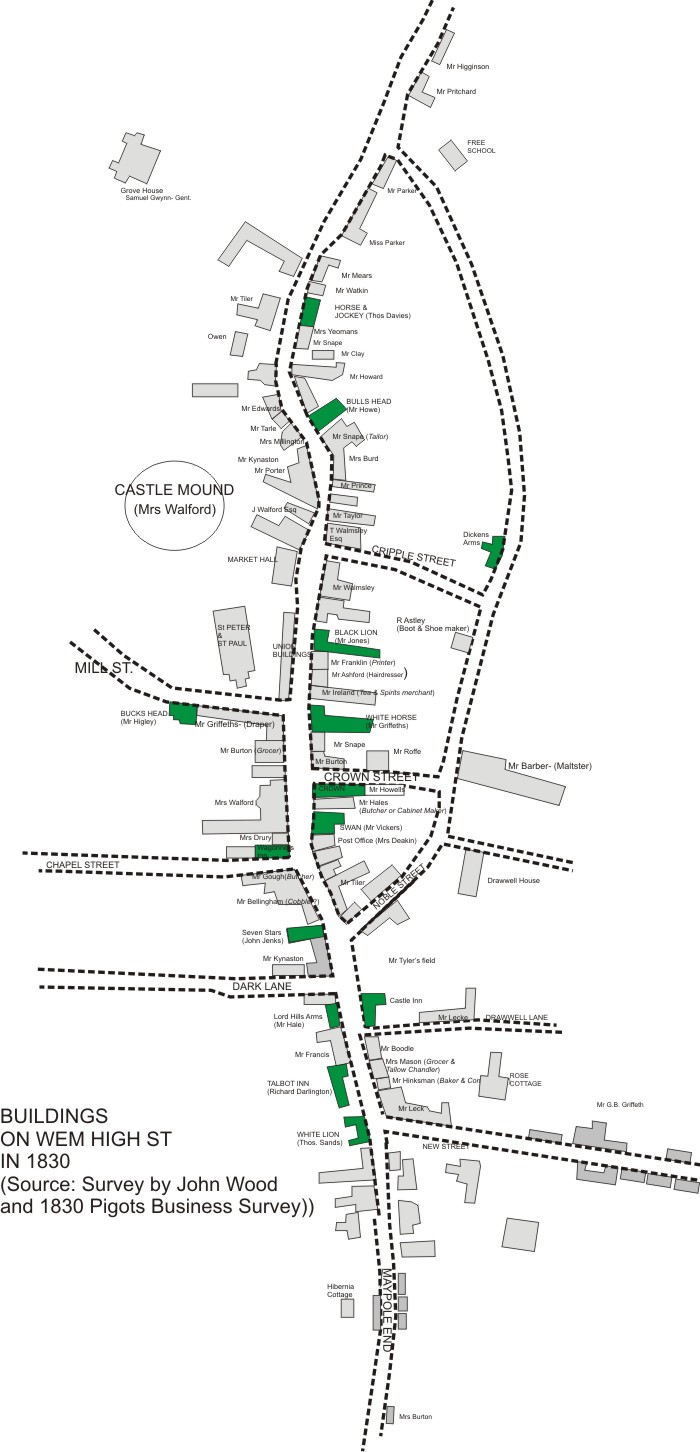
| History of Wem | Wem in 1870 | Wem in the mid 1890s | Commercial families |
Early C20th photos |
| Pre-WWII | Wem's Ancient Markets | Aston Street | High Street Buildings through the ages | |
The pre-railway High StreetWem in 1830Anyone arriving from afar in 1830 would have come by Stagecoach. 'The Hero' called at the Castle and the Union Stagecoach at the White Lion. The High Street east of the junction with New Street was known as 'Maypole End'. This was about half a mile long and went past the cemetery (now the Millennium Green.) It then split, with one branch bending right into Aston Road and the other being Soulton Road. The current bed and breakfast, 'The Aston Lodge' was in Aston Road, not in Soulton Road as it now is. The coming of the railway forced the roads to be split on the south sides of the tracks, in order to create one road crossing.
The graph illustrates the types of trades prevalent in the town at the time. Note the large number of clothing shops, all of which have now disappeared.
The street now known as 'Market Street' was then 'Cripple Street', replacing the area west of the Market Hall, which appears to have become known as Bow Street.The top of the town, round the Hawkstone Arms was known as Ireland. Just as well this is not still so, the Internet searches have enough trouble distinguishing 'Wem' from 'Wembley' or 'Web'!The area between the Market Hall and the entrance to Chapel St seems to have been known as Market Street.Thus in the 1850 edition of Bagshaw's Directory, the 'Black Lion' was listed as being in Market St. and the 'Lord Hill' as 'Maypole End'
|

